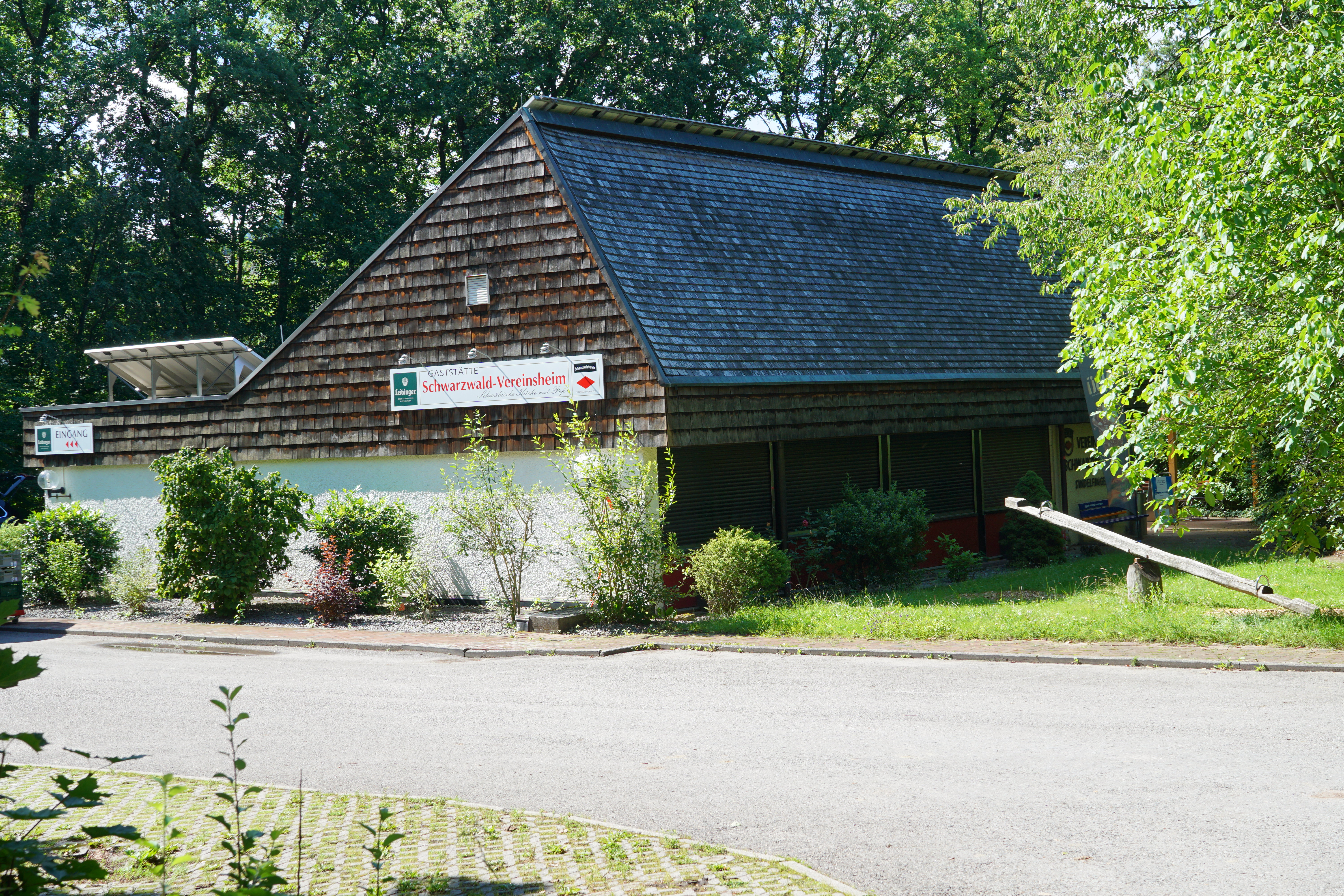|
Rinkenkopf
The Rinkenkopf is a mountain, 760 m high, on the territory of Baiersbronn in the Northern Black Forest. The wooded mountain ridge is bounded in the south by the Murg valley and in the northeast by the valley of the Tonbach. To the northwest a roughly 50-metre-deep saddle (the ''Sattelei'') separates it from the foothills of the Grindenschwarzwald. On the mountain are the Rinkenwall (''Rinkenmauer''), Rinken Tower (''Rinkenturm'') and two transmission towers. Several hiking trails lead there, including the Murgleiter and der Genießerpfad to the Sattelei Hut. Rinkenwall At the top of the mountain are the remains of a 115-metre-long and up to 40-metre-wide circular rampart. The date it was built and its purpose are unknown. In the gift register (''Schenkungsbuch'') of Reichenbach Abbey is the first mention of the mountain around 1100: ''in monte qui Rincga vocatur''. The ring-shaped earthworks were probably already in existence at this time and gave the mountain its name. ... [...More Info...] [...Related Items...] OR: [Wikipedia] [Google] [Baidu] |
Rinkenwall
The Rinkenwall or Rinkenmauer is a circular rampart fortification at the southeastern tip of the Rinkenkopf mountain above the Murg valley near the village of Baiersbronn in the county of Freudenstadt in the south German state of Baden-Württemberg. The hillfort could have been a fortification built to protect Reichenbach Abbey, which was built in the late 11th century and which is named as its owner. History The fortification is first recorded around 1100 in the gift register at Reichenbach Abbey. Here an estate is referred to as ''in monte qui Rincga vocatur''. The word ''Rincga'' means roughly "ring-shaped", probably referring to the circular rampart (''Ringwall''). The donation of holdings on the Rinkenberg clearly suggests that the fortification at that time had no longer any military or administrative function. There have been detailed descriptions since 1859. These offer various interpretations of the age of the fort and its use as a refuge castle or to protect gra ... [...More Info...] [...Related Items...] OR: [Wikipedia] [Google] [Baidu] |
Mountains And Hills Of The Black Forest
The list contains a selection of the mountains and hills in the Black Forest, in order of their height.''Wandern im Schwarzwald'' . Over 1,400 m |
Baiersbronn
Baiersbronn is a Municipalities of Germany, municipality and a village in the district of Freudenstadt (district), Freudenstadt in Baden-Württemberg in southern Germany. It is situated in the Black Forest on the Murg (Northern Black Forest), Murg river. Nearby is the mountain of Rinkenkopf (759.6 m) with its hillfort, the Rinkenwall. Administratively, Baiersbronn consists of the following nine villages: * Baiersbronn * Friedrichstal * Huzenbach * Klosterreichenbach * Mitteltal * Obertal * Röt-Schönegründ * Schönmünzach-Schwarzenberg * Tonbach In its current form, Baiersbronn was created in the 1960s and 1970s by joining five municipalities. Its main industry is tourism. Baiersbronn is twinned with Midhurst in West Sussex, England. Reichenbach Priory (Baden-Württemberg), Reichenbach Priory, a medieval monastery building, is located in the village of Klosterreichenbach. Baiersbronn is famous as a centre of haute cuisine in Germany, having 8 Michelin stars in total. In 20 ... [...More Info...] [...Related Items...] OR: [Wikipedia] [Google] [Baidu] |
Reichenbach Abbey (Baden-Württemberg)
Reichenbach may refer to: Places Austria * Reichenbach (Litschau), a part of Litschau * Reichenbach (Rappottenstein), a part of Rappottenstein Germany * Reichenbach (Oberlausitz), in Niederschlesischer Oberlausitzkreis district, Saxony * Reichenbach im Vogtland, in Vogtlandkreis district, Saxony * Reichenbach am Heuberg, in Tuttlingen district, Baden-Württemberg * Reichenbach an der Fils, in Esslingen district, Baden-Württemberg * Reichenbach, Upper Palatinate, in Cham district, Bavaria ** Reichenbach Abbey (Bavaria), Benedictine monastery in Reichenbach * Reichenbach, Upper Franconia, in Kronach district, Bavaria * Reichenbach, Thuringia in Saale-Holzland district, Thuringia * Reichenbach, Birkenfeld, in Birkenfeld district, Rhineland-Palatinate * Reichenbach (Hornberg), in the Black Forest, Baden-Württemberg * Reichenbach-Steegen in Kaiserslautern district, Rhineland-Palatinate * Reichenbach, a part of Hessisch Lichtenau, Hesse * Reichenbach, a part of Lautertal (Ode ... [...More Info...] [...Related Items...] OR: [Wikipedia] [Google] [Baidu] |
Mountains And Hills Of Baden-Württemberg
A mountain is an elevated portion of the Earth's crust, generally with steep sides that show significant exposed bedrock. Although definitions vary, a mountain may differ from a plateau in having a limited Summit (topography), summit area, and is usually higher than a hill, typically rising at least 300 metres (1,000 feet) above the surrounding land. A few mountains are Monadnock, isolated summits, but most occur in mountain ranges. Mountain formation, Mountains are formed through Tectonic plate, tectonic forces, erosion, or volcanism, which act on time scales of up to tens of millions of years. Once mountain building ceases, mountains are slowly leveled through the action of weathering, through Slump (geology), slumping and other forms of mass wasting, as well as through erosion by rivers and glaciers. High elevations on mountains produce Alpine climate, colder climates than at sea level at similar latitude. These colder climates strongly affect the Montane ecosystems, ecosys ... [...More Info...] [...Related Items...] OR: [Wikipedia] [Google] [Baidu] |
Mountains Under 1000 Metres
A mountain is an elevated portion of the Earth's crust, generally with steep sides that show significant exposed bedrock. Although definitions vary, a mountain may differ from a plateau in having a limited summit area, and is usually higher than a hill, typically rising at least 300 metres (1,000 feet) above the surrounding land. A few mountains are isolated summits, but most occur in mountain ranges. Mountains are formed through tectonic forces, erosion, or volcanism, which act on time scales of up to tens of millions of years. Once mountain building ceases, mountains are slowly leveled through the action of weathering, through slumping and other forms of mass wasting, as well as through erosion by rivers and glaciers. High elevations on mountains produce colder climates than at sea level at similar latitude. These colder climates strongly affect the ecosystems of mountains: different elevations have different plants and animals. Because of the less hospitable terrain and ... [...More Info...] [...Related Items...] OR: [Wikipedia] [Google] [Baidu] |
William II Of Württemberg
, spouse = , issue = Pauline, Princess of WiedPrince Ulrich , house = Württemberg , father = Prince Frederick of Württemberg , mother = Princess Catherine of Württemberg , birth_date = , birth_place = Stuttgart, Kingdom of Württemberg , death_date = , death_place = Bebenhausen, Württemberg, Weimar Republic , religion = Lutheran William II (german: Wilhelm Karl Paul Heinrich Friedrich; 25 February 1848 – 2 October 1921) was the last King of Württemberg. He ruled from 6 October 1891 until the dissolution of the kingdom on 30 November 1918. He was the last German ruler to abdicate in the wake of the November Revolution of 1918. Early years William was born the son of Prince Frederick of Württemberg (1808–1870) by his wife Princess Catherine Frederica of Württemberg (1821–1898), herself the daughter of King William I of Württemberg (1781–1864). His parents were first cousins, being the children of two brothers, and Will ... [...More Info...] [...Related Items...] OR: [Wikipedia] [Google] [Baidu] |
Württemberg
Württemberg ( ; ) is a historical German territory roughly corresponding to the cultural and linguistic region of Swabia. The main town of the region is Stuttgart. Together with Baden and Hohenzollern, two other historical territories, Württemberg now forms the Federal State of Baden-Württemberg. Württemberg was formerly also spelled Würtemberg and Wirtemberg. History Originally part of the old Duchy of Swabia, its history can be summarized in the following periods: *County of Württemberg (1083–1495) * Duchy of Württemberg (1495–1803) *Electorate of Württemberg (1803–1806) *Kingdom of Württemberg (1806–1918) *Free People's State of Württemberg (1918–1945) After World War II, it was split into Württemberg-Baden and Württemberg-Hohenzollern due to the different occupation zones of the United States and France. Finally, in 1952, it was integrated into Baden-Württemberg. Stuttgart, the historical capital city of Württemberg, became the capital of the p ... [...More Info...] [...Related Items...] OR: [Wikipedia] [Google] [Baidu] |
Observation Tower
An observation tower is a structure used to view events from a long distance and to create a full 360 degree range of vision to conduct long distance observations. Observation towers are usually at least tall and are made from stone, iron, and wood. Many modern towers are also used as TV towers, restaurants, or churches. The towers first appeared in the ancient world, as long ago as the Babylonian Empire. Observation towers that are used as guard posts or observation posts over an extended period to overlook an area are commonly called watchtowers instead. Construction and usage Observation towers are an easily visible sight on the countryside, as they must rise over trees and other obstacles to ensure clear vision. Older control rooms have often been likened to medieval chambers. The heavy use of stone, iron, and wood in their construction helps to create this illusion. Modern towers frequently have observation decks or terraces with restaurants or on the roof of mountain st ... [...More Info...] [...Related Items...] OR: [Wikipedia] [Google] [Baidu] |
Black Forest Club
The Schwarzwaldverein (Black Forest Club or Black Forest Association) was founded in Freiburg im Breisgau (Germany) in 1864, making it the oldest German hiking and mountaineering club. The Schwarzwaldverein has almost 90,000 members in 241 local chapters. Activities of the club include hiking, environmental protection, the promotion of local culture ('' Heimatpflege''), trail maintenance, and family and youth work projects in the Black Forest. Organisation The Schwarzwaldverein consists of the main association and 241 independent local member chapters. The local chapters are organized into 17 regions, and have a membership of almost 90,000 members. The executive committee consists of three members, and the current president is Eugen Dieterle. In addition to the executive committee, there are nine divisional officers, each of whom is responsible for coordinating specific parts of the club's activities. The main offices are in Freiburg. Trail Maintenance The Schwarzwaldvere ... [...More Info...] [...Related Items...] OR: [Wikipedia] [Google] [Baidu] |
Northern Black Forest
The Northern Black Forest (german: Nordschwarzwald) refers to the northern third of the Black Forest in Germany or, less commonly today, to the northern half of this mountain region. Geography The Northern Black Forest is bounded in the north by a line from Karlsruhe to Pforzheim and, in the south, by a line running from the Rench valley to Freudenstadt. Its northern boundary largely coincides with the emergence of the extensively forested bunter sandstone strata from the arable region of the Kraichgau; its southern boundary with the Central Black Forest (or, in the case of a bipartite division, the Southern Black Forest) varies depending on the definition or natural regional division used (see also Black Forest). Earlier, the Northern Black Forest was the entire northern half of the mountain range as far as the Kinzig (Rhine), line of the Kinzig valley, which divides the Black Forest east of Lahr/Schwarzwald, Lahr. To the west it is bounded by the Upper Rhine Plain, to the east ... [...More Info...] [...Related Items...] OR: [Wikipedia] [Google] [Baidu] |
.jpg)

.jpg)




